Global Emergency Update April 2024 —This is the latest report on Catholic Relief Services’ ongoing emergency response and recovery activities around the world. Our work is possible thanks to the generous support of private and public donors, the dedication of local partners, and the unwavering presence of Caritas and the local Catholic Church.


Global Emergency Update June 2022
Global Emergency Update: Food Insecurity Affecting Millions
Communities across the world face extreme hunger as conflict, climate change, COVID-19 supply chain issues and rising food costs compound. Catholic Relief Services is collaborating with our partners on a comprehensive response in affected countries to meet immediate needs and ramp up programming that will strengthen community resilience.
Over the past two years, vulnerable communities across the world have faced multiplying challenges in securing enough food to feed their families. Inflation of food prices has put people under tremendous strain, while supply chain interruptions have impeded humanitarian operations and disrupted local and regional market conditions. Many governments continue to divert resources and funding to mitigate the impacts of COVID-19 on people’s livelihoods, health and other areas of need. Regional conflicts and climate change-related crises are complicating the situation.
49 million
people in 46 countries face extreme, life-threatening conditions of hunger and malnutrition.
The war in Ukraine is straining an already-fragile global food system, especially as emerging markets and developing economies depend on Russia and Ukraine for fuel, fertilizer and staples like wheat and sunflower oil. As costs increase, the potential for further conflict and instability continues to alarm the world’s most vulnerable countries, where so many rely on imported food to feed their families and survive. CRS is collaborating with our partners on a comprehensive response to meet immediate needs and ramp up programming that will strengthen resilience.
Afghanistan
Rural farming families across Afghanistan are suffering from unprecedented levels of hunger and malnutrition. The Afghan food crisis—due to severe drought—has been exacerbated by a financial crisis following the Taliban takeover and spikes of COVID-19. The United Nations is bracing for catastrophic conditions in Afghanistan, with more than 22 million people, including young children, facing hunger and life-threatening food shortages. In the areas where CRS works, farmers report critically reduced harvests of wheat and potato—two important staples that feed families through the cold winters. High rates of acute malnutrition are reported across 16 provinces, where people are selling their livestock and other assets, and leaving their villages to seek assistance or work as day laborers.Ethiopia
More than 8 million people are currently affected across the southern and southeastern parts of the country. Migration is a contributing factor for young children, expectant mothers and caregivers who are missing critical health care, leading to extremely high levels of malnutrition. At least 2 million livestock have died from a lack of pasture and water. Schools in five districts were severely affected by drought, with 62% of students dropping out.
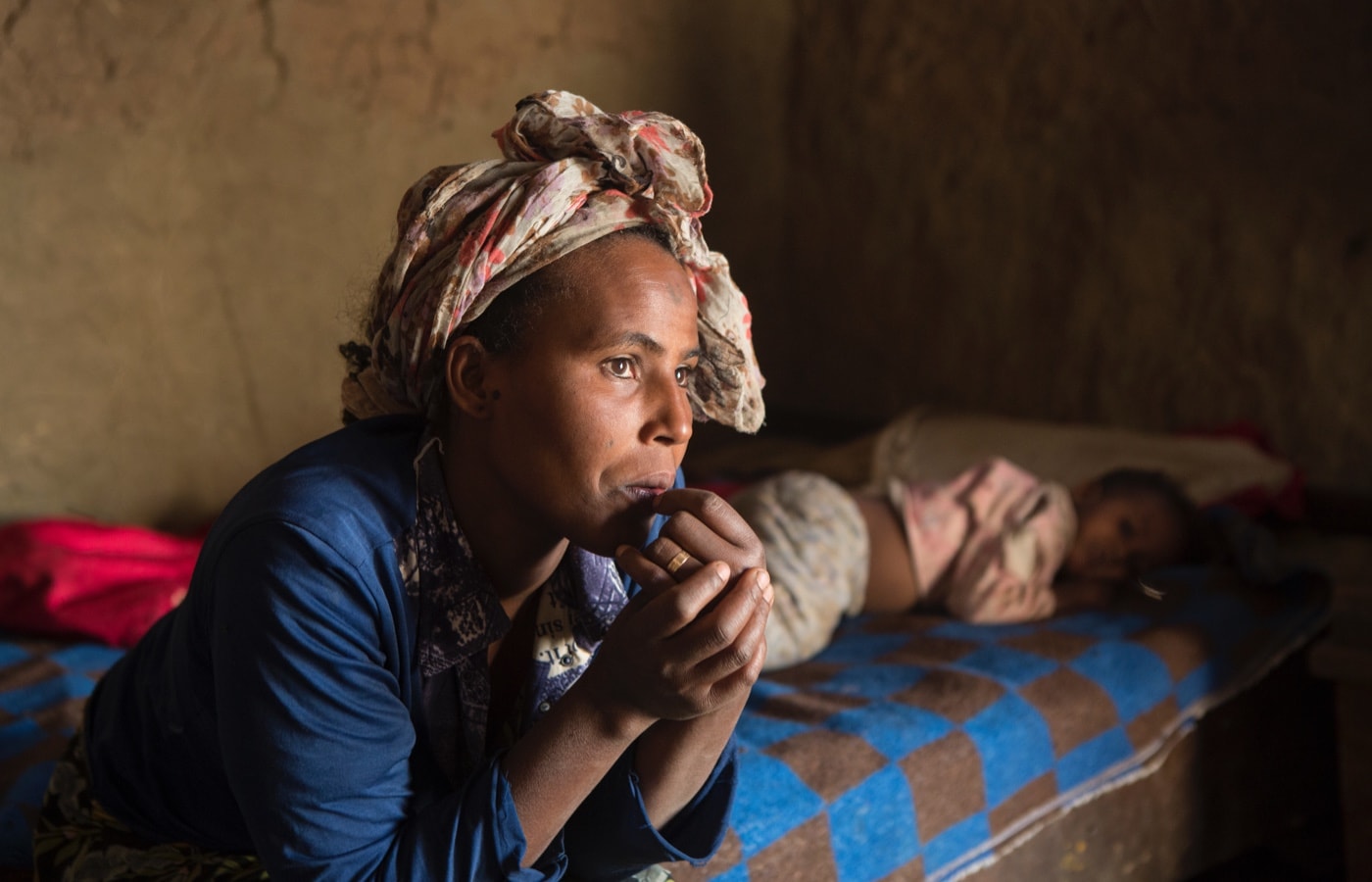
Ganet Gelgehu rests with her son Joseph in their village of Gubeta Arjo, Ethiopia.
Photo by Sara A. Fajardo/CRS
Madagascar
Families are experiencing deteriorating conditions, coping with the COVID-19 lockdown, fuel and price hikes, and continued drought. As access to food is diminishing, many families are taking up extreme coping strategies—such as going all day without eating. Madagascar continues to rely on humanitarian food assistance, while wheat and sunflower oil imports, fertilizer and fuel costs have risen. On top of this, an unprecedented five cyclones in three months have led to the displacement of 172,000 people, and damaged large portions of cassava and rice crops. Southern Madagascar is of greatest concern, with 1.64 million people estimated to be facing food shortages and rising rates of malnutrition.
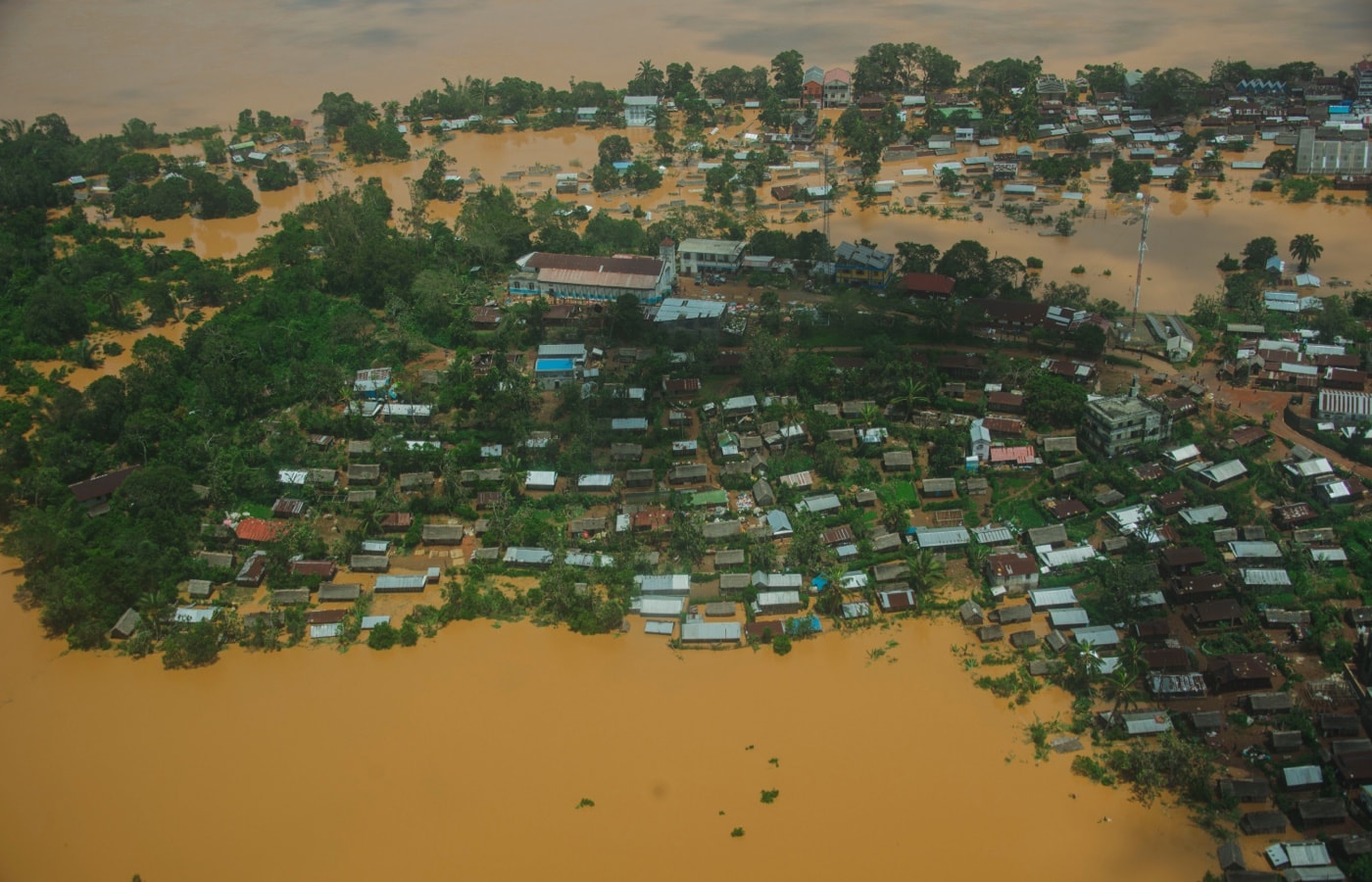
Back-to-back cyclones in Madagascar devastated already vulnerable communities, displacing 172,000 people and destroying land and crops.
Photo by Tofy Rabenandrasana for CRS
Nigeria
People across Nigeria are at crisis levels of food insecurity due to conflict, disruptions to the agricultural season, decreased access to food and income, and inflated food prices and lower household purchasing power. For families in the hard-to-access areas of northeastern Nigeria, which has dealt with 12 years of conflict, food shortages are resulting in high rates of malnutrition. Through August 2022, at least 19.5 million people are expected to experience elevated levels of malnutrition.
Kenya
With thousands leaving their homes in search of food, water and pasture in Kenya, conflicts over grazing lands and access to basic services are on the rise in relocation areas. Kenya’s arid and semi-arid counties are facing a complex crisis—especially in Marsabit and Isiolo counties: Ongoing drought has led to migration and a devastating depletion in pasture and water for livestock. Ethnic conflicts have occurred along the Isiolo-Wajir and Marsabit-Ethiopia borders and the pandemic, food commodity price spikes, and livestock diseases have all exacerbated the situation. More than a half-million young children are suffering from acute malnutrition, including a reported 140,993 children requiring lifesaving treatment.
Farmers across regions report severely reduced harvests, which leads to malnutrition, migration and conflict for limited resources.
Somalia
In Somalia, drought, locust invasions and the socioeconomic impacts of COVID-19 have affected the livelihoods of nomadic and farming communities. This has led to massive displacement and heightened conflict around land tenure and resources. Communities are experiencing critical water shortages, and widely rely on truck-delivered clean water, which is extremely expensive for vulnerable rural communities. Nearly 3 million people have been displaced, and 48% of Somalia’s population needs humanitarian assistance. An estimated 840,000 young children are expected to face acute malnutrition this year.
South Sudan
South Sudan is experiencing one of the worst hunger crises on record worldwide, as almost 70% of its people need urgent assistance. Malnutrition is a major public health emergency, with about 1.8 million children, and pregnant and nursing mothers acutely malnourished. Conditions in Ayod County are particularly dire. With an estimated acute malnutrition rate of 30.9%, three years of severe flooding—coupled with overflow from the Nile River—have submerged homes and settlements.
Many people have been displaced after losing their homes, food, land, assets and livelihoods. It is predicted that 33,000 people may face catastrophic hunger levels in the coming months. There is also a shortage of medicine and medical supplies. Fewer children are able to receive routine immunizations, and pregnant women and new mothers are unable to access health care. Cases of malaria and waterborne diseases have also increased.
Honduras
With increasing inflation, lack of job opportunities, high levels of violence, and rising climate change-related threats such as prolonged drought, the humanitarian crisis in Honduras is at critical levels. At least 2.9 million people lack sufficient food, and the World Food Program recently deemed the country a "Hunger Hot Spot."
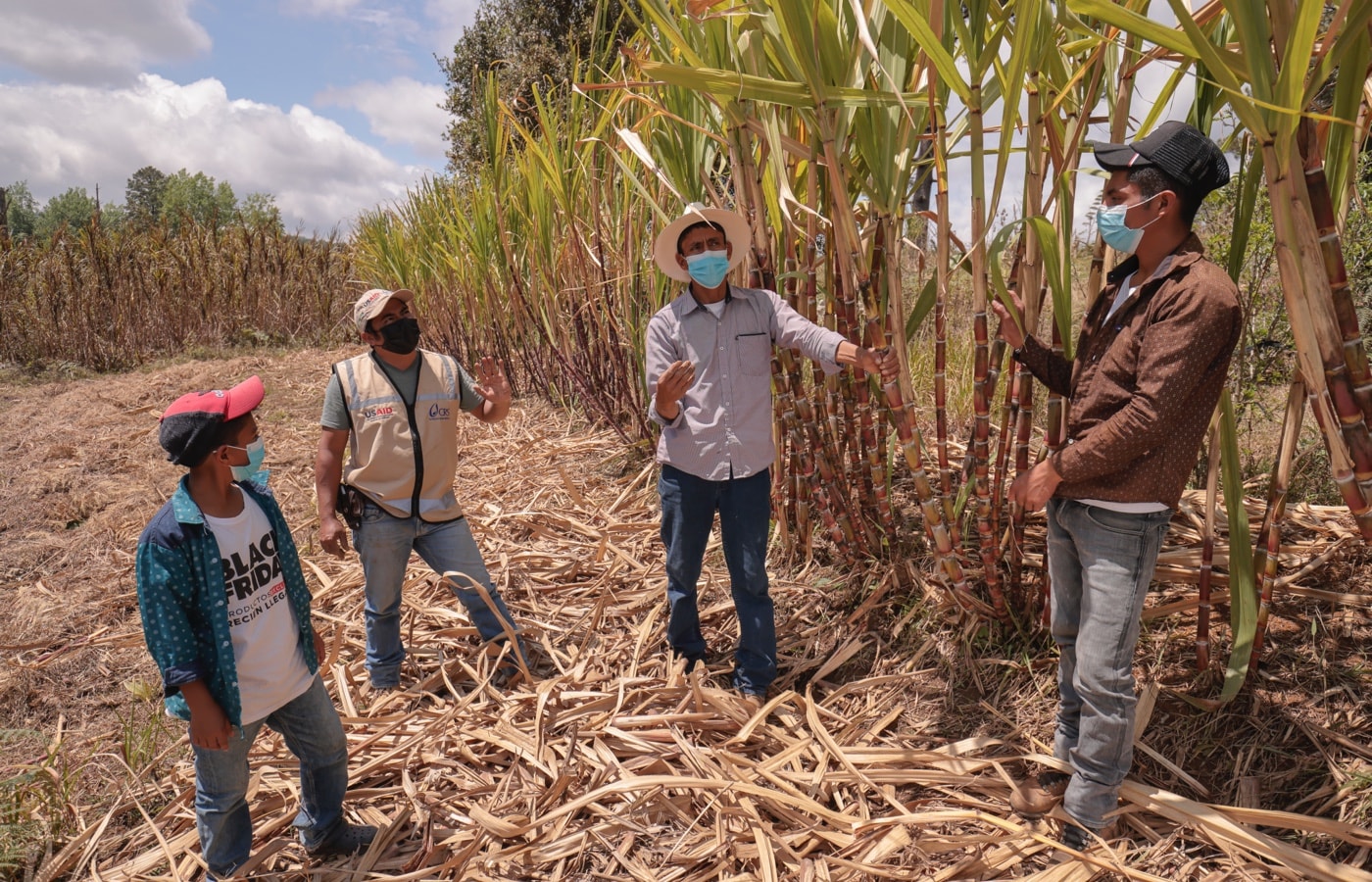
Honduras was recently deemed a "Hunger Hot Spot" by the World Food Program, given compounding threats on food security, including years of consecutive drought.
Photo by Oscar Leiva/Silverlight for CRS
CRS and Partner Response
CRS is responding with a range of programming tailored to local contexts to meet urgent and rapidly changing needs. The following activities represent an overview of programming:
Food and Supplies
- Providing families with cash assistance and vouchers to buy essential food and living supplies at local markets.
- Distributing seeds and tools as a complement to agriculture training and facilitating market linkages to farmers.
- Providing food distributions in areas with limited market supply, and supporting school feeding interventions.
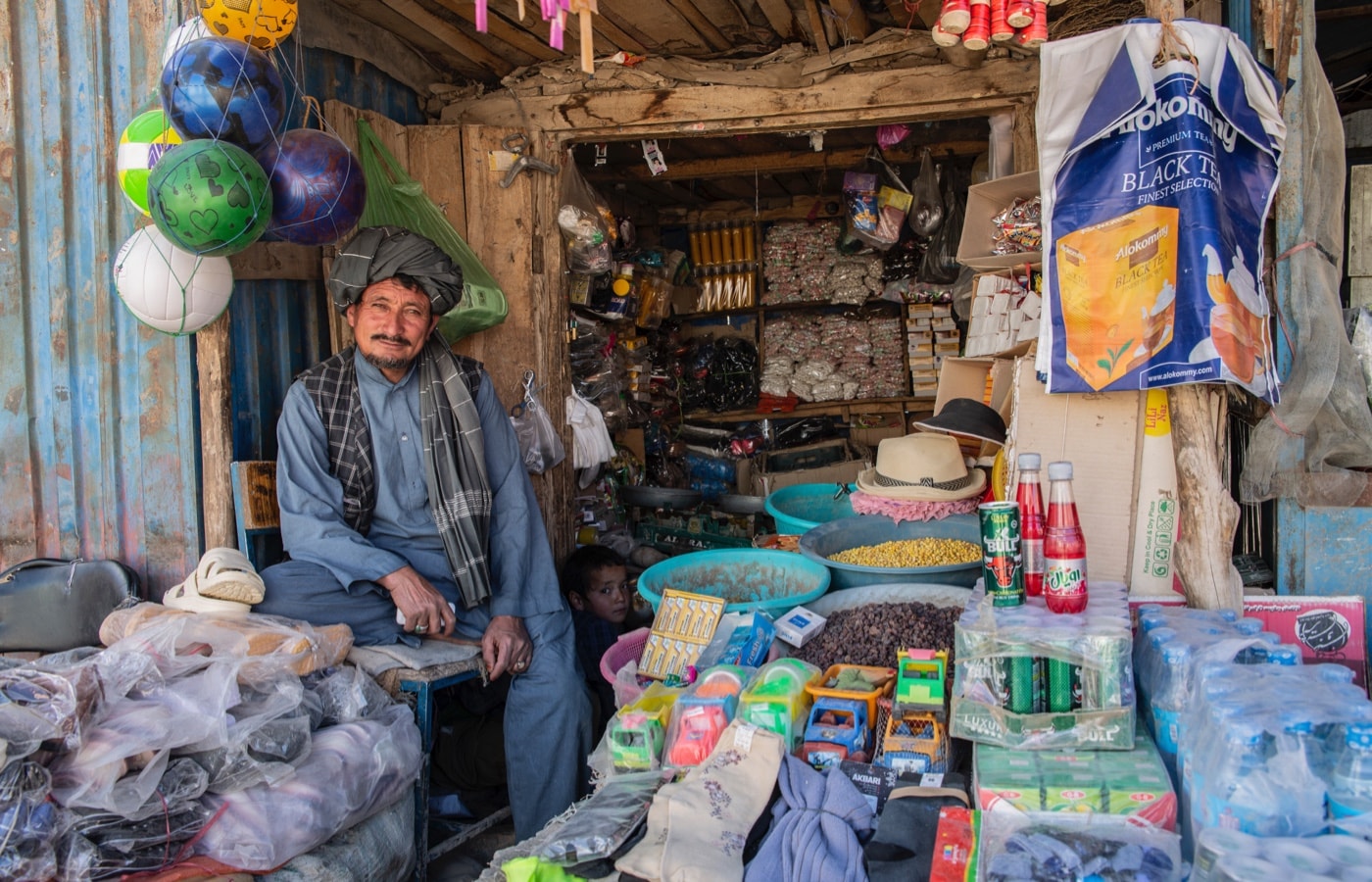
Cash assistance in Afghanistan helps drought-affected farmers purchase supplies and support the local economy.
Photo by CRS staff
Medical Assistance
- Establishing mobile health units to provide health and nutrition services to displaced families and communities.
- Providing health and nutrition programs to treat diseases, maternal and child health, and community-based management of acute malnutrition.
- Delivering health consultations and reaching people with essential nutrition services.
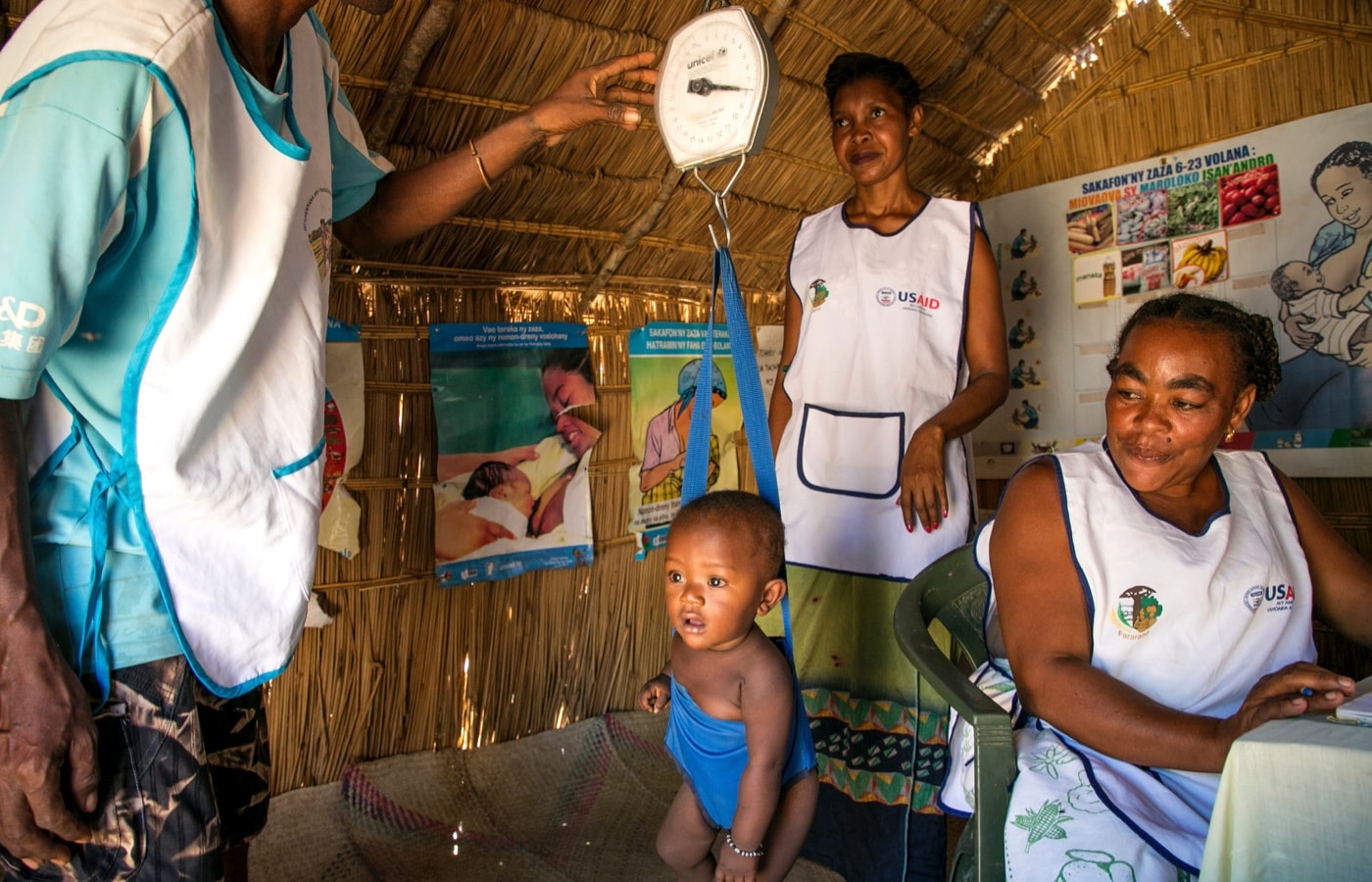
Medical assistance helps measure and care for nutrition among children in Madagascar.
Photo by Jim Stipe/CRS
Water, Sanitation and Hygiene
- Providing equipment, water pumps, fuel and community-based maintenance needed to repair local water infrastructure, and trucking clean water to the highest-risk communities most affected by drought.
- Providing families with hygiene kits or vouchers, as well as feminine hygiene kits for women and girls.
- Training community health volunteers to promote sanitation and hygiene practices, safe water management and hand-washing.
- Offering people cash-for-work opportunities focused on removing silt from shallow wells.
- Providing water, sanitation and hygiene supplies, and conducting trainings on hygiene and sanitation practices that promote health in areas of displaced communities.
- Cleaning and repairing community boreholes.
Agriculture and Livelihoods
- Providing farmer families with drought-resistant seeds of nutrient-rich crops.
- Promoting kitchen gardens to help families grow vegetables.
- Collaborating with local governments to provide training on crop production and post-harvest handling, using nutrient-rich crops and bulk seed practices.
- Connecting farmer families with government extension services.
- Helping local governments vaccinate and deworm livestock in communities hosting displaced herders.
- Supporting nomadic communities with feeding and protecting the health of their livestock.
- Offering people cash-for-work opportunities focused on managing invasive plant species.
- Working with community-led savings and lending groups that provide people with access to capital to start new businesses, pay school fees and medical costs, improve their housing and purchase seeds, tools and livestock.
Download & Print Global Emergency Update English Global Emergency Update
Recent Global Emergency Updates
March 2024
Global Food Crisis—CRS has identified 25 priority countries that are affected by high levels of acute food insecurity and malnutrition due to combinations of these drivers, which are expected to continue through 2024. Areas of urgent concern include East Africa and the Sahel, as well as Central America, Southern Africa and, more recently, Gaza.
February 2024
Ukraine War: Two Years of Emergency Relief and Recovery—In February of 2022, Russia invaded Ukraine, causing massive destruction and loss, separating families and uprooting millions of people from their homes. Over the past two years, Catholic Relief Services has worked with Caritas and other partners across Ukraine and the region to provide a range of support to meet people’s urgent needs for food, shelter, living supplies, medical care and counseling.

